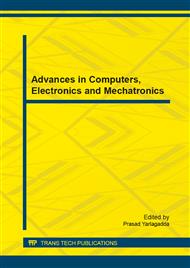[1]
L. Ruyu, G Yanliang. Influence of low frequency noise and its control. Chinese Journal of Acoustics, Vol. 3 (1998), pp.214-223.
Google Scholar
[2]
Kuo S M, Morgan D R. Active noise control: a tutorial reiew. Proceddings of the IEEE, Vol. 87 (1999) . pp.943-973.
Google Scholar
[3]
Saruta S. Active noise control apparatus for domestic appliance, U.S. Patent 5, 129, 003. (1992).
Google Scholar
[4]
Smith D G, Arnold M F, Ziegler E W, et al. A Systems Approach to Appliance Compressor Quieting Using Active Noise Control Techniques, (1992).
Google Scholar
[5]
Information on http: /www. antysound. com/index. aspx?menuid=4&ty pe=productinfo&lanmuid =6&infoid=86&language=cn.
Google Scholar
[6]
Information on http: /www. caacoustics. com/UpFile/1-110P5140Z8. pdf.
Google Scholar
[7]
Cao Binfang. Research on adaptive noise cancelling technology, Hunan University (2007).
Google Scholar
[8]
Martens, Steven, and Ludwig Haber. Jet noise reduction for high speed exhaust systems., ASME Turbo Expo 2008: Power for Land, Sea, and Air. American Society of Mechanical Engineers, (2008).
DOI: 10.1115/gt2008-50455
Google Scholar
[9]
Shimada Y, Nishimura Y, Usagawa T, et al. Active control of periodic noise by a synthesized harmonic signal. INTER-NOISE and NOISE-CON Congress and Conference Proceedings. Institute of Noise Control Engineering, 1995, (5): 1097-1106.
DOI: 10.3397/in-2021-2254
Google Scholar
[10]
Tahir Akhtar, Muhammad, and Wataru Mitsuhashi. Improving performance of FxLMS algorithm for active noise control of impulsive noise., Journal of Sound and Vibration 327. 3 (2009): 647-656.
DOI: 10.1016/j.jsv.2009.07.023
Google Scholar
[11]
Tabatabaei Ardekani, I., and Waleed H. Abdulla. Theoretical convergence analysis of FxLMS algorithm., Signal Processing 90. 12 (2010): 3046-3055.
DOI: 10.1016/j.sigpro.2010.05.009
Google Scholar
[12]
Ardekani, I. Tabatabaei, and W. H. Abdulla. FxLMS-based active noise control: A quick review., Proceedings of. (2011).
Google Scholar
[13]
Environmental Noise Pollution Control Act People's Republic of China, Information on http: /www. zhb. gov. cn/epi-sepa/zcfg/w1/w3. htm.
Google Scholar


